First Sumerian Revolt – People Oppose The Harsh Akkadian Empire
A. Sutherland - AncientPages.com - We tend to focus on ancient Sumerian inventions, their significant architectural accomplishments, and their vast scientific knowledge.
Ancient Sumerian clay tablets are praised and admired by archaeologists, historians, and anyone interested in ancient civilizations.
Prisoners escorted by a soldier, on a victory stele of Sargon of Akkad, circa 2300 BC. The hairstyle of the prisoners (curly hair on top and short hair on the sides) is characteristic of Sumerians, as also seen on the Standard of Ur. Louvre Museum. Image credit: ALFGRN - - CC BY-SA 2.0
But what we do not discuss so often is Sumer's turbulent history with all its revolts and wars.
Lugalzagesi Achieved Much Before Sargon the Great Appeared On The Scene
For a short time, around 2350 BC, King Lugalzagesi united the city-states of Sumer by defeating each in turn. He was the last Sumerian king before Sumer's conquest by Sargon of Akkad and the rise of the Akkadian Empire.
After 25 years of rule, Lugalzagesi was defeated by Sargon, later called the Great, a skilled politician who united the independent regions of Sumer into one state. His kingdom is today widely considered the first empire in the world.
Thus, Sargon, who reigned from c. 2334 to 2284 BC, became king over southern Mesopotamia. His vast power extended far beyond Mesopotamia, reaching into Syria and Lebanon in the west, the Elam state in the east, and the Taurus Mountains in Turkey in the north. He had a well-organized army capable of making new conquests and a well-organized, administered centralized Sumerian state. His inscriptions confirm his access to significant land and sea trade routes.
At the time of Sargon's death, his son Rimush became the Akkadian Empire ruler and reigned c. 2284–2276 BC as the King of Akkad. Ancient sources confirm that some Sumerian city-states immediately rebelled against their Akkadian governors and their supporters and replaced them with Sumer rulers and councils almost as soon as Sargon died.
Why Did The Rebels Have To Give Up Their Fight?
Not much is known about this historical and very turbulent period. However, it is known that cities like Lagash, Kazallu, Ur, Adab, Zabala, Kidingira, and Umma had a well-organized resistance against the rule of the Akkadians in Mesopotamia.
In the end, wealthy and influential Sumerians had to accept the rule of Akkadian governors. Rimush confronted extensive opposition from the Sumerian cities, and according to his inscriptions, he had to repress widespread revolts in the Sumerian cities at the beginning of his reign.
Samuel Noah Kramer writes that "in bitter battles involving tens of thousands of troops, he [Rimush] conquered or rather reconquered, the cities of Ur, Umma, Adab, Lagash, Der, and Kazallu, as well as the countries of Elam and Barahshi. 1
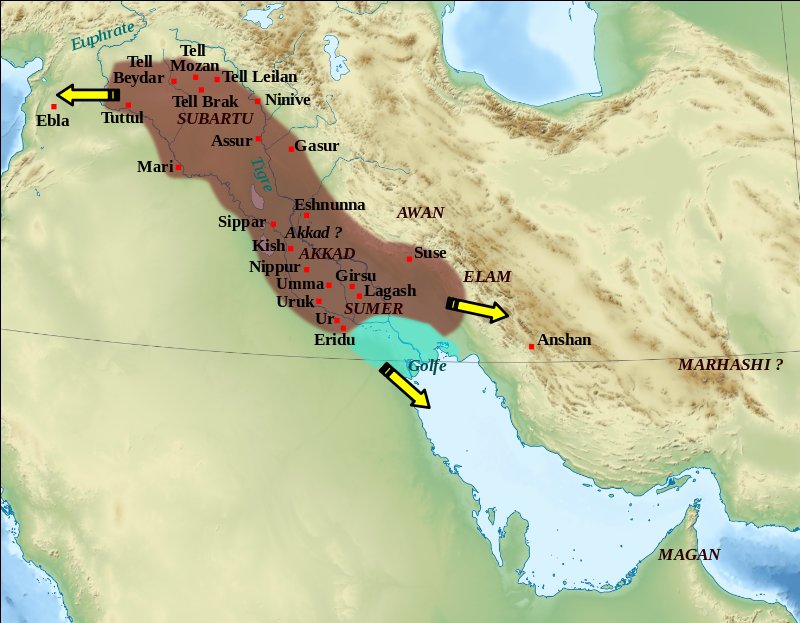
Akkadian Empire map. Image source
Rimush even organized a successful campaign against Elam and returned home with rich booty. He ruled only nine years, and his short reign was not much more than suppressing revolts amongst the people who his father had conquered. And yet, the real threat to his rule came not from these rebellions but from much closer to home. As a precaution against future uprisings, he destroyed city walls and other defensive structures in many Sumerian city-states.
Was it enough to stop dissatisfaction, uprisings, and other forms of discontent?
Did Manishtushu Assassinate His Younger Brother Rimush?
It is not precisely known what happened to Rimush, but it seems that he was assassinated. He was followed by elder brother Manishtushu, who probably violently "removed" Rimush from the throne in 2,270 BC.
Interestingly, the two brothers continued to rule using their father's political and military patterns.
Military encounters between Akkadian and Sumerian forces were bloody. The fightings were fierce and cost many casualties. It has been estimated that as many as twenty thousand Sumerian troops may have been killed, captured, and sold into slavery. That probably represented up to one-third of the number of fighting men from the rebelling Sumer cities.
There has been speculated that Manishtushu was part of a conspiracy to kill Rimush and take the throne, but was it necessary to kill their younger brother?
Rimush successfully suppressed revolts within the Akkadian Empire, and Manishtushu could freely begin building trade routes, gathering a substantial fleet of warships. His goal was also to extend and strengthen the Akkadian Empire. One of Manishtushu's inscriptions says:
"When he [Manishtushu] had crossed the Lower Sea (it means the Persian Gulf) in ships, thirty-two kings gathered against him, but he defeated them and smote their cities and prostrated their lords and destroyed [the whole countryside] as far as the silver mines." 2
Yet Another Assassination And New Revolts
However, in 2,255 BC, Manishtushu, like his brother Rimush, was assassinated after fifteen years of rule.
Rimush and Manishtushu and all the successors of Sargon struggled with raids of foreign tribes and rebellions of Sumerian cities. During Naram-Sin's reign, a great rebellion broke out.
Naram-Sîn reigned 2261-2224 B.C and was the last great king of the Akkadian Empire and Sargon's grandson. He was considered the most prominent Akkadian king after Sargon. He, too, had many problems with the revolts and rebels.
The whole country revolted against him, and the uprising had two leaders; one led the north's cities, and the other stood at the head of the south's towns.
Naram-Sin suppressed both rebellions and retained power and during his reign, the Akkadian empire was at least as large as under Sargon and probably even more extensive.
Written by – A. Sutherland - AncientPages.com Senior Staff Writer
Updated on October 06, 2023
Copyright © AncientPages.com All rights reserved. This material may not be published, broadcast, rewritten or redistributed in whole or part without the express written permission of AncientPages.com
Expand for referencesReferences:
1 S. N. Kramer The Sumerians
History, Innovating. The Sumerians: A Complete Guide to Sumerian History And The Sumerian Civilization.
Hamblin, William J. Warfare in Ancient Near East to 1600 BC
More From Ancient Pages
-
 Pharaoh Ahmose I Expelled The Hyksos Invaders And Changed History Of Ancient Egypt
Featured Stories | Mar 16, 2021
Pharaoh Ahmose I Expelled The Hyksos Invaders And Changed History Of Ancient Egypt
Featured Stories | Mar 16, 2021 -
 Anne Askew: Woman Of Great Courage, Strong Beliefs And Principles Who Was Arrested For Heresy, Imprisoned, Tortured And Burnt At The Stake
Featured Stories | Feb 15, 2019
Anne Askew: Woman Of Great Courage, Strong Beliefs And Principles Who Was Arrested For Heresy, Imprisoned, Tortured And Burnt At The Stake
Featured Stories | Feb 15, 2019 -
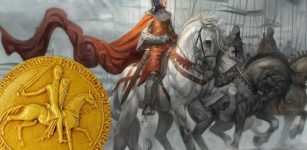 Richard The Lionheart: Famous Leader, Warrior And Military Mastermind But Not The Best English King
Featured Stories | May 29, 2017
Richard The Lionheart: Famous Leader, Warrior And Military Mastermind But Not The Best English King
Featured Stories | May 29, 2017 -
 10 Ancient Love Symbols
Ancient Symbols | Jan 5, 2016
10 Ancient Love Symbols
Ancient Symbols | Jan 5, 2016 -
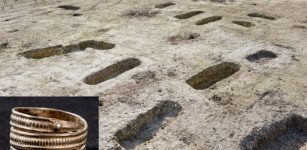 One Of The Largest Anglo-Saxon Burial Grounds Ever Uncovered In Britain Reported By Archaeologists
Archaeology | Jun 17, 2022
One Of The Largest Anglo-Saxon Burial Grounds Ever Uncovered In Britain Reported By Archaeologists
Archaeology | Jun 17, 2022 -
 Ice Core Records From Greenland Tell Stories Of Rise And Fall Of Ancient European Civilizations
Archaeology | May 24, 2018
Ice Core Records From Greenland Tell Stories Of Rise And Fall Of Ancient European Civilizations
Archaeology | May 24, 2018 -
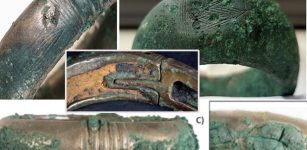 Intriguing Hoard Of Bronze Age Bracelets From Brittany, France Remains An Archaeological Puzzle
Featured Stories | Jan 30, 2024
Intriguing Hoard Of Bronze Age Bracelets From Brittany, France Remains An Archaeological Puzzle
Featured Stories | Jan 30, 2024 -
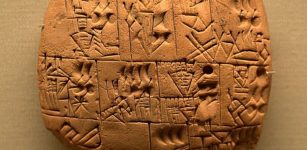 Uruk – Home To The Legendary Hero Gilgamesh
Featured Stories | Jun 6, 2021
Uruk – Home To The Legendary Hero Gilgamesh
Featured Stories | Jun 6, 2021 -
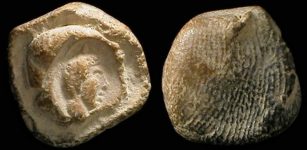 Fascinating Ancient History Of Fingerprints
Featured Stories | Jul 7, 2022
Fascinating Ancient History Of Fingerprints
Featured Stories | Jul 7, 2022 -
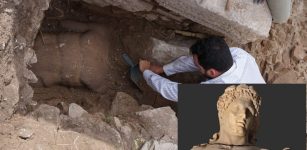 Stunning Well-Preserved Larger Than Life Statue Of Hercules Discovered In Philippi, Greece
Archaeology | Sep 24, 2022
Stunning Well-Preserved Larger Than Life Statue Of Hercules Discovered In Philippi, Greece
Archaeology | Sep 24, 2022 -
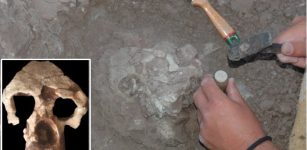 New Fossil Ape Challenges The Story Of Human Evolution
Evolution | Aug 24, 2023
New Fossil Ape Challenges The Story Of Human Evolution
Evolution | Aug 24, 2023 -
 Eye Of Horus – Powerful, Ancient Egyptian Symbol With Deep Meaning
Ancient Symbols | Jan 21, 2019
Eye Of Horus – Powerful, Ancient Egyptian Symbol With Deep Meaning
Ancient Symbols | Jan 21, 2019 -
 Geological Mystery Of The Lost Continent Argoland Solved
Earth Changes | Oct 26, 2023
Geological Mystery Of The Lost Continent Argoland Solved
Earth Changes | Oct 26, 2023 -
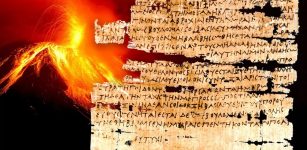 Pharaohs In Trouble: Climate Change And Natural Disasters Led To Political Uprisings In Ancient Egypt
Archaeology | Oct 17, 2017
Pharaohs In Trouble: Climate Change And Natural Disasters Led To Political Uprisings In Ancient Egypt
Archaeology | Oct 17, 2017 -
 Mystery Of The Ancient Bear Bones In The Aleutian Islands, Alaska
Archaeology | Oct 5, 2023
Mystery Of The Ancient Bear Bones In The Aleutian Islands, Alaska
Archaeology | Oct 5, 2023 -
 Peculiar Bronze Mace Head Left By Unknown Ancient Culture Discovered In Poland
Archaeology | Jul 1, 2019
Peculiar Bronze Mace Head Left By Unknown Ancient Culture Discovered In Poland
Archaeology | Jul 1, 2019 -
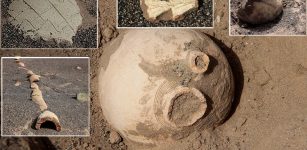 Ruins Of Ancient City Emerged From The Sand In Kerman Province, Iran
Archaeology | Apr 15, 2017
Ruins Of Ancient City Emerged From The Sand In Kerman Province, Iran
Archaeology | Apr 15, 2017 -
 Thousand year old Pagan warrior tomb discovered in Poland
News | Aug 23, 2015
Thousand year old Pagan warrior tomb discovered in Poland
News | Aug 23, 2015 -
 Mary Boleyn – King Henry VIII’s Other Woman And Sister Of Anne Boleyn
Featured Stories | Jul 24, 2018
Mary Boleyn – King Henry VIII’s Other Woman And Sister Of Anne Boleyn
Featured Stories | Jul 24, 2018 -
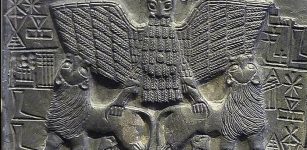 Urukagina: Ruler Of Sumerian City Of Lagash And His Reforms To Combat Corruption
Civilizations | May 18, 2017
Urukagina: Ruler Of Sumerian City Of Lagash And His Reforms To Combat Corruption
Civilizations | May 18, 2017

